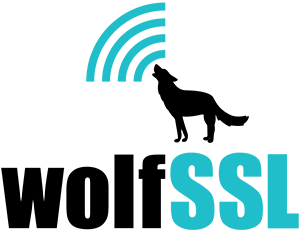Introduction The wolfSSL embedded SSL/TLS library has recently expanded its compatibility by adding support for the Open Watcom C/C++ compiler. This enhancement enables developers to build wolfSSL using Open Watcom across multiple platforms including Windows, Linux, and OS/2. This blog post explores the new Open Watcom support, its features, and how to leverage it in […]
Read MoreMore TagCategory: Uncategorized
Meeting Secure Boot Compliance Requirements
In today’s regulatory environment, implementing a secure bootloader is no longer just a best practice – it’s becoming a compliance mandate. Recent cybersecurity regulations across the globe (from the EU to the US and beyond) explicitly call for measures like secure boot and firmware authenticity verification as requirements for connected devices. In this updated post […]
Read MoreMore TagNew Feature Spotlight: Offloading Extended Master Secret Generation to Hardware in wolfSSL
We’re thrilled to announce a new feature in wolfSSL 5.8.0: the ability to offload Extended Master Secret (EMS) generation to hardware, introduced in Pull Request #8303. Integrated into `–enable-pkcallbacks –enable-extended-master` builds, this enhancement empowers developers to leverage Trusted Execution Environments (TEEs) or custom hardware for EMS generation, boosting security and performance in TLS sessions. This […]
Read MoreMore TagLive Webinar: Latest FIPS 140-3 developments at wolfSSL
Join us for an exclusive look into the Latest FIPS 140-3 Developments at wolfSSL, presented by Kaleb Himes, Senior Software Engineer at wolfSSL. This live webinar is scheduled for June 4th at 9 AM PT. Discover cutting-edge advancements in FIPS 140-3 compliance, Post-Quantum cryptography, and optimized solutions for Level 2 and Level 3 validation. Register […]
Read MoreMore TagExpired Test Certificate: baltimore-cybertrust-root.pem and make check Failures
On May 12th, 2025, the test certificate baltimore-cybertrust-root.pem expired. This may cause issues with the test cases run during make check with wolfSSL builds that do not use the OpenSSL compatibility layer and have a filesystem enabled. One of the unit tests attempts to load all Certificate Authorities (CAs) from the certs/external directory, which previously […]
Read MoreMore TagFirefox Gets FIPS 140-3 Power: wolfPKCS11 Unleashes wolfCrypt in NSS!
wolfSSL is thrilled to announce a significant milestone in browser security: the successful integration of wolfPKCS11 to provide FIPS 140-3 validated cryptography for the Mozilla Firefox browser. This is achieved by enabling wolfPKCS11 to serve as the backend cryptographic provider for Firefox’s Network Security Services (NSS) layer. This development represents a major step forward, bringing […]
Read MoreMore TagIronVelo Chooses wolfSSL for Secure Identity Solutions
In the realm of identity management, security is paramount. IronVelo, a company dedicated to building robust and reliable identity provider solutions, understands this critical need. To meet their stringent security requirements, IronVelo has partnered with wolfSSL, leveraging the power and reliability of the wolfCrypt cryptographic library. This collaboration highlights IronVelo’s commitment to security best practices […]
Read MoreMore TagwolfSSL Enhances PKCS7 Streaming Support with Indefinite Length Handling
wolfSSL has extended its PKCS7 capabilities to better handle indefinite length encodings, particularly in streaming scenarios. While basic support for indefinite length verification existed, recent updates have refined the wc_PKCS7_VerifySignedData() API to process multipart and indefinite length content more efficiently in a streaming manner.(wolfSSL) Key Enhancements Streaming Verification: The wc_PKCS7_VerifySignedData() function now supports verifying PKCS7 […]
Read MoreMore TagLive Webinar: Achieving Avionics Security with DO-178C-Certified Cryptography
If you’re developing avionics software or working on embedded systems for aerospace, DO-178C certification isn’t optional. It’s essential for safety, compliance, and market acceptance. Join us on May 28th at 9 AM PT for a live webinar, “Achieving Avionics Security with DO-178C-Certified Cryptography,” presented by wolfSSL Software Engineer Tesfa Mael. Register Now: Achieving Avionics Security […]
Read MoreMore TagwolfSSL 5.8.0: Easier NXP SE050 Development with Automatic Key Deletion
The NXP EdgeLock SE050 is a popular secure element providing a strong root of trust for IoT devices, known for its “Plug & Trust” simplicity. wolfSSL has consistently supported the SE050, enabling robust hardware-based security for TLS, cloud onboarding, and data protection. However, managing cryptographic keys on secure elements during development can often be a […]
Read MoreMore Tag
